eToro: full review — social trading, CopyTrader, licenses, fees & reviews (2025)
What is eToro and why is it notable? Can trading be combined with social‑network functionality? eToro shows that it can. It’s an international online investment platform founded in 2007 that provides access to stocks, cryptocurrencies, ETFs, Forex and other markets via an easy‑to‑use app. eToro’s hallmark is the blend of a classic online broker with a social network of traders where investors can interact and copy each other’s trades.
Today, millions around the globe use eToro — registered users exceeded 30 million (as of 2025, over 40 million accounts). The platform is available in 75+ countries across Europe, Asia, Latin America and beyond. The interface is localized into many languages (including Russian), which helps traders from different regions get started quickly. It’s no surprise eToro is particularly popular with beginners: watching experienced investors and copying their trades lowers the barrier to entry.
The core concept of eToro is “social trading.” Beyond regular asset trading, users can follow each other, discuss market news, and automatically mirror the trades of successful investors via CopyTrader. Think of trading not in isolation but within a community where you can review strategies, ask questions, and get feedback. This turns investing into a more supportive, interactive experience. Many first‑time investors note that eToro’s social format helped them understand markets faster and avoid common mistakes. (Beginners often repeat the same errors — learning from real examples in the community makes a difference.)
Contents
- eToro reliability, licenses and regulation
- eToro pros and cons — quick overview
- Tradable instruments on eToro: what can you buy/sell?
- eToro social trading: CopyTrader and investor communication
- eToro platform: interface, web and mobile app
- Account types on eToro and how to open one
- Deposits and withdrawals: methods and timing
- Trading fees on eToro: spreads and crypto percentage
- Other costs: withdrawals, inactivity, currency conversion
- eToro bonuses and promotions
- Education and research: how eToro helps traders
- eToro customer support
- Real trader reviews of eToro
- Alternatives to eToro: comparison with other brokers
- Conclusion: is eToro worth choosing?
eToro reliability, licenses and regulation
When choosing a broker, reliability comes first. eToro is supervised by several well‑known financial regulators, providing a high level of client protection. The company holds licenses from:
- FCA (Financial Conduct Authority) in the United Kingdom — one of the world’s strictest supervisors.
- CySEC (Cyprus Securities and Exchange Commission) — enables servicing EU clients under MiFID.
- ASIC (Australian Securities and Investments Commission) — a respected regulator in the Asia‑Pacific region.
- SEC/FINRA in the USA (for operating on the U.S. market).
- Seychelles FSC (for international clients outside EU/USA/Australia jurisdictions).
These licenses mean eToro must follow strict client‑protection rules. For instance, retail funds are held in segregated bank accounts, separate from company money (client‑fund segregation). This ensures investors’ money is not mixed with operating funds. Even if something happened to the company, client assets would remain protected. In addition, regional compensation schemes apply: the UK’s FSCS insures eligible balances up to £85,000, and CySEC’s Investor Compensation Fund covers up to €20,000. In the USA, eToro accounts have SIPC coverage up to $500,000, including $250,000 in cash.
eToro also provides negative balance protection: a retail client cannot lose more than the account balance. If a sudden market move pushes the balance below zero, the broker resets it (a requirement in the EU and Australia that eToro adheres to). In other words, you won’t owe the broker; at worst, you lose your deposit.
Another point is transparency: since May 2025 eToro has been a public fintech company with shares listed on NASDAQ. Public status adds accountability: eToro publishes financial statements and undergoes investor‑grade audits. Shareholders include major banks and VC funds, and the company is led by its founder, Yoni Assia.
eToro also invests in reputation via partnerships. The platform has sponsored well‑known sports clubs: for example, it has worked with English Premier League teams (Everton, Crystal Palace, etc.), German Bundesliga teams, and rugby leagues. Such deals signal credibility as major brands vet partners carefully.
Is it safe to keep funds on eToro? Based on the above — yes. The broker has operated for nearly two decades under strict oversight, with client‑asset protections in place. Over more than 15 years there have been no fraud cases by the company; isolated incidents (e.g., forced closures of Russian stocks in 2022 due to sanctions) stemmed from external events. Regulatory oversight and compensation mechanisms mean your investments on eToro are safeguarded. Of course, follow basic security hygiene: enable two‑factor authentication, never share your password, etc. But in terms of broker reliability, eToro has earned the trust of millions.
eToro pros and cons — quick overview
Like any platform, eToro has strengths and weaknesses. First, the key advantages that attract millions of users:
- 0% commission on stocks and ETFs. eToro charges no broker commission for buying real stocks and ETFs (for most countries outside the USA). You invest without a per‑trade fee, paying only the bid/ask spread. For example, buying $100 of Apple stock costs exactly $100 — no dealing or custody fees. Selling is also 0%. This compares favorably with traditional brokers that may charge 0.1–0.5%.
- Low entry threshold. The minimum deposit is just $50 (in some regions $100), and you can start from $10 thanks to fractional shares. Even with a small budget, a beginner can build a portfolio of large companies. Many competitors have higher entry thresholds.
- Convenient platform. eToro’s interface is intuitive and user‑friendly. There’s a web platform and a mobile app — both with modern design. Traders often praise its simplicity — the learning curve is minimal.
- Social trading and copy investing. eToro’s signature feature is the ability to automatically copy successful traders via CopyTrader. Beginners can learn from pros, while busy investors can potentially earn without doing all the analysis themselves. Few brokers offer anything comparable.
- Wide range of assets. eToro is multi‑asset. You can trade 3,000+ instruments in one place: U.S., European and Asian stocks, dozens of cryptocurrencies, Forex pairs, commodities (gold, oil, etc.), and stock indices via CFDs. That diversity supports broad diversification.
- $100,000 demo account. At sign‑up you get a free virtual portfolio with a large balance to practice. It’s ideal for testing strategies risk‑free.
- Localization and language. The platform is fully localized (including Russian), and support can respond in multiple languages. For CIS traders this lowers friction.
- Negative balance protection. As noted, eToro ensures you won’t go below zero — positions are stopped out to limit losses to your deposit.
Now the drawbacks often mentioned by users and reviewers:
- Wider spreads on some assets. In lieu of commissions, eToro earns on spreads. On major markets, spreads are average (EUR/USD ~1 pip, S&P 500 ~0.75 points), but some instruments are pricier. For crypto, the effective spread/fee is ~1% per side (around 1% round‑trip). By comparison, dedicated crypto exchanges often charge ~0.1–0.2%. Spreads can also widen on illiquid assets or during news.
- $5 withdrawal fee. Every payout incurs a flat $5 fee regardless of amount. It’s modest but can eat into returns if you withdraw frequently in small sums. Many brokers (e.g., Pepperstone) don’t charge for withdrawals, so eToro trails here.
- $10/month inactivity fee. If you don’t log in for 12 months, a $10 monthly maintenance fee applies. Active traders won’t notice it, but buy‑and‑hold investors should log in occasionally. The fee isn’t charged if your balance is zero or you simply sign in from time to time.
- USD‑only accounts. USD is the sole base currency. Top‑ups in other currencies (EUR, GBP, etc.) are converted to USD with a markup (roughly 0.5–1.5%). To avoid conversion costs, consider funding in USD (e.g., a USD card or PayPal).
- No MetaTrader support. Unlike many Forex brokers, eToro doesn’t support MT4/MT5. You can’t run expert advisors, algos or custom indicators. For traders used to MetaTrader, that’s a significant limitation.
- Limited analysis tools. Built‑in charts and indicators cover basic technical analysis, but there’s no Level 2 order book, fundamental stock screener, or strategy programming. Power users may want deeper tooling.
- No phone support. You can reach eToro via online chat or a support ticket. There’s no hotline. Support isn’t 24/7, only business hours on weekdays. Some users report slow responses (1–2 days) on complex queries.
- Regional restrictions. Not everyone can open an account. For example, eToro does not serve residents of Russia and Belarus (since 2022 due to regulatory constraints) and some other countries. Traders in these regions must consider alternatives.
Why is eToro so popular with beginners? Despite the drawbacks, the platform offers what newcomers need: simplicity, low entry, straightforward pricing on stocks, and the ability to learn from others. Reviewers highlight the innovative social layer and zero‑commission stock investing — factors that outweigh the negatives for many users. eToro also keeps improving: lowering minimums, adding assets, and expanding localization. The most common complaints are withdrawal/conversion fees, lack of MetaTrader, and occasionally slow support. Understanding these limits helps you plan and avoid surprises. Overall, eToro’s advantages outweigh its downsides for most, especially if your goal is convenient investing and copy trading rather than professional algorithmic trading.
Tradable instruments on eToro: what can you buy/sell?
Stocks.
eToro offers 2,000+ stocks of major U.S. companies (Apple, Tesla, Amazon, etc.) and European (BP, BMW) and Asian names. All support fractional shares from $10 — you don’t need $300 for one Tesla share; you can invest $10 and get ~0.03 shares. If you open an unleveraged Buy position, eToro purchases the stock in your name (via a custodian) — you own the real asset. There’s no commission to buy, and spreads are typically tight, so long‑term stock investing is cost‑effective. Selling also has 0% commission. If a company pays dividends, eToro credits them to your balance (after withholding tax — for U.S. stocks the default withholding is 30%). Q: Are Russian stocks available on eToro? No. The broker focuses on international markets — the USA, Europe, Asia. Emerging‑market names (Russia, Turkey, etc.) are not listed.
ETFs (exchange‑traded funds).
The platform includes dozens of popular ETFs such as funds tracking the S&P 500, NASDAQ‑100, gold, oil, and more. ETF purchases are commission‑free (like stocks). This is convenient for diversification — you can invest in the broad U.S. market with zero dealing fees. Unleveraged ETF buys are real assets. Dividend distributions are credited to your account as well.
Cryptocurrencies.
eToro supports 100+ cryptoassets — from leaders like Bitcoin (BTC) and Ethereum (ETH) to popular altcoins such as XRP, ADA, DOGE and others. Crypto trades are available 24/7. Crypto is one of the few asset classes where eToro charges a notable fee: about 1% per trade. Practically, buy prices display slightly above market (+0.5%) and sell prices slightly below (−0.5%), totaling around 1% “spread.” That’s higher than many crypto exchanges, but eToro offers simplicity and copy trading. If you buy crypto without leverage, eToro acquires the real token and holds it for you. Later you can move supported coins to an external wallet via the eToro Money Wallet app (BTC, ETH and a number of others). Q: Is crypto a CFD or real coins? Both exist. Unleveraged Buy positions are real assets (with withdrawal option). Short positions or X2 leverage are crypto‑CFDs with no on‑chain delivery.
Forex (currencies).
For Forex traders, eToro lists 47 currency pairs — from majors like EUR/USD, GBP/JPY to exotics. Execution is via CFDs, so there’s no commission, only the spread. Typical spreads: EUR/USD ~1 pip (0.0001), GBP/USD ~2 pips, USD/JPY ~1.5 pips. Not the tightest on the market but acceptable for modest sizes. Leverage depends on your regulator: max 1:30 for EU/Australia retail, while professional or certain non‑EU accounts may allow up to 1:400. There’s no per‑lot fee; costs are embedded in the spread.
Commodities.
You can speculate on commodity prices — gold, silver, oil, copper, platinum, gas, and agricultural products (wheat, corn, etc.). Trading is via CFDs referencing the futures market. For example, gold typically has a ~$0.45 spread, oil ~5 cents. Leverage for metals is up to 1:20, for oil 1:10, and for agri‑products 1:10 (EU retail). There’s no physical delivery — you’re trading price movements.
Indices.
About 13 major global stock indices are available via CFDs, including US500 (S&P 500), US100 (Nasdaq 100), DJ30 (Dow Jones), GER40 (DAX), UK100 (FTSE 100), JP225 (Nikkei) and others. Spreads are moderate: S&P 500 ~0.75 points, Dow Jones ~6 points, DAX ~2 points. Leverage on index CFDs is up to 1:20. Indices suit those who prefer trading the broad market rather than stock picking.
CFDs vs. real positions.
It’s important to know which trades are CFDs. The rule of thumb: unleveraged “Buy” positions in stocks, ETFs and crypto are real assets (eToro purchases them for you). Everything else is a CFD. For example, shorting stocks or crypto is always via CFDs, and any leveraged trade is a CFD. For CFDs, eToro acts as market maker but states it provides best‑execution pricing. For you, the difference is that real stocks come with ownership rights and dividends, while CFDs deliver price difference and overnight swaps. Dividends on stock CFDs are credited (less tax) on long positions. Swaps apply on overnight CFD holds: for stocks ~0.015% per day when leveraged; for FX it depends on rates; for crypto‑CFDs they can be very high (~0.23% per day, i.e., >80% annually), so leveraged crypto is not for long holds. Unleveraged real positions have no swaps.
Q&A:
- Can I trade bonds, options or futures on eToro? No. The lineup is limited to the categories listed (stocks, ETFs, crypto, Forex, commodities, indices). Traditional bonds, exchange‑traded options, or direct futures access are not offered.
- How many cryptocurrencies are available now? Around 100+. The list grows as eToro adds popular tokens, though it still trails dedicated exchanges by coin count.
- Does eToro offer Russian stocks or the ruble? No. Since 2014 Russian assets have not been a focus, and in 2022 the platform further limited Russia‑related operations. You’ll mainly find USD, EUR, GBP, JPY and other major currencies.
eToro social trading: CopyTrader and investor communication
CopyTrader: automatic trade copying
CopyTrader lets you mirror all current and future trades of a chosen investor with one click. Browse the catalogue of investors (with open stats on returns, risk and instruments) and find, for example, a steady trader with ~20% annualized performance. Click “Copy” and set an amount — say $500. From then on, their trades are replicated on your account in proportion to your allocation.
Example of how CopyTrader works: the trader you copy manages $10,000 and buys 10 Tesla shares for $2,000 (20% of their capital). You’ll copy the same 20% allocation — i.e., $100 (20% of your $500). If they close the position with +10%, they earn $200; you will record a $10 profit (10% of $100). Copying occurs in near real time, typically within seconds of the original trade.
There is no extra fee for copiers — eToro does not charge for using CopyTrader. You only pay the normal spreads/swaps on your positions. Popular traders are compensated by the platform through the Popular Investor program (see below). This alignment benefits everyone: newcomers gain experience and potential returns, while successful traders earn an additional income stream.
CopyTrader flexibility:
You can stop copying any trader at any time. Either close all copied positions or keep them open under your own management. You can also exclude a specific position you disagree with so it won’t close when the leader exits. eToro allows a global Stop Loss on the copy — for example, halt copying if the total loss exceeds 10% — to limit drawdowns. You can add or remove funds from a copy whenever needed.
Limits:
- Minimum to copy a single trader — $200.
- You can copy up to 100 traders simultaneously.
- The minimum copied trade is $1 (smaller proportional trades are skipped).
Popular Investor program
For experienced traders who are copied, eToro offers the Popular Investor program, which rewards sharing a consistent strategy. Members receive monthly payments based on Assets Under Copy (AUC). Tiers include:
- Cadet — entry level, granted after gaining several copiers and having at least $1,000 of own equity. Includes certain perks (e.g., news subscriptions).
- Rising Star — higher tier with AUC from $50,000 and at least 2 months of history. Payouts around $500/month.
- Champion — AUC from $500,000 with returns/risk within program limits. Payouts around $1,000/month + spread discounts.
- Elite — top tier from $10M AUC. Payout is up to 2% per year on AUM, paid monthly. Elite investors also receive 100% spread rebates and other privileges.
Top Popular Investors earn tens of thousands of dollars a year from eToro payouts — on top of trading results. This motivates skilled investors to build a public track record, strengthening the ecosystem.
Social network and interaction
eToro is also a social network for traders. Each user has a public profile and feed with posts and discussions. You can share market thoughts, news and trade commentary. Others can like and comment. Each instrument (a stock, crypto, etc.) has its own page with a community feed — users discuss Apple or Bitcoin and share ideas. Newcomers can ask the community directly and get responses.
This social layer makes investing more engaging. Many note the sense of community: you’re not alone with charts — you’re surrounded by thousands of investors you can learn from. Decisions remain yours, but having a “second opinion” helps. Each instrument page also shows sentiment — the share of eToro users currently long (% Buy) or short (% Sell) — a rough crowd indicator.
Smart Portfolios (CopyPortfolios)
Complementing copy trading, eToro offers ready‑made thematic baskets called Smart Portfolios (formerly CopyPortfolios). These are built either by eToro’s analytics team or algorithmically. Examples include:
- BigTech Portfolio: weights in Apple, Microsoft, Google, Amazon, Meta and other tech giants.
- CryptoPortfolio: a basket of leading cryptocurrencies (BTC, ETH, ADA, XRP, etc.) rebalanced monthly.
- DroneTech, Driverless, Cloud, Dividend: other popular themes focusing on sectors or strategies (drones, cloud computing, dividend stocks, etc.).
By investing in a Smart Portfolio, you effectively copy a curated basket of dozens of assets. eToro manages rebalancing and ongoing maintenance. Everything is transparent — you can see composition, performance history, and commentary. The minimum allocation is $500. There’s no annual management fee; eToro earns on spreads within the holdings. Smart Portfolios suit those who want exposure to a theme (e.g., tech or crypto) without hand‑picking many securities.
Q&A on social trading:
- Can I copy multiple traders? Yes. You can copy up to 100 traders and spread capital across them.
- What happens when the copied trader closes a trade? Yours closes automatically as well (unless you manually detached it). Your percentage result mirrors theirs.
- Can I pause copying without closing positions? Yes. Use “Pause copy” — new trades won’t be copied, but existing ones remain. Or stop copying and leave positions open.
- How do I choose traders to copy? Use filters in “Copy People”: by return (over various periods), risk level, geography, asset class (stocks, crypto, etc.), number of copiers. Focus on consistency — longer history and moderate risk (1–6/10) rather than short‑term spikes. eToro also marks some profiles as “Editor’s Choice.”
eToro platform: interface, web and mobile app
eToro web platform:
The platform runs in your browser — no downloads. The interface is modern and minimal. Main navigation is on the left (portfolio, markets, copy people, reports, etc.), the center shows lists or charts, and the right panel is for order entry. It’s intentionally simple, which most users appreciate. Power users may find it basic, but many prefer the social‑app feel over a complex terminal.
Functionally, the web platform covers the essentials:
- Search and filters: Find instruments by name or ticker. Assets are grouped by category (stocks, crypto, indices, etc.). There are themed collections and filters — e.g., sector (tech, healthcare), exchange (NYSE, NASDAQ), volatility, performance.
- ProCharts: Interactive charts per instrument with line, candles, bars. Popular indicators are available — moving averages (MA), RSI, MACD, Bollinger Bands, and more. You can open up to six charts in separate windows for comparison. Not as extensive as specialist terminals (no custom indicators/EAs), but sufficient for basic analysis.
- News and sentiment feed: Each asset page shows community posts and aggregated headlines (for stocks, key stories from financial media). You also see the share of buyers/sellers (%), indicating community sentiment.
- Analyst research: For many stocks there’s a “Research” tab with Wall Street analyst data via TipRanks — consensus rating (buy/hold/sell) and price targets. eToro may also show hedge‑fund and insider sentiment where available.
- Economic calendar: Built‑in calendar for macro releases (rates, inflation, jobs), earnings, and dividend dates to plan around events.
- Order types: Market and pending orders are supported — Limit and Stop. You can set Stop Loss and Take Profit. Advanced types (trailing stop, OCO) are not available.
- Watchlist: Create your own list to track prices in real time and jump to trading quickly.
Platform limitations: no deep customization or automation. Since eToro doesn’t support MetaTrader, you can’t run trading robots or code via an API — those features aren’t part of the design. The platform favors a clean, manual experience.
eToro mobile app:
For those on the go, eToro offers solid iOS and Android apps (free). The mobile experience mirrors the web: register, verify, fund, trade, copy, and chat — all from your phone. Navigation is touch‑friendly, charts adapt to smaller screens. Many younger investors pick eToro for its mobile experience, which feels familiar to social apps. Push notifications alert you to events: stop‑loss triggers, sharp price moves, or actions by traders you copy.
Mobile security is robust: enable PIN or biometrics (fingerprint/Face ID). Two‑factor authentication is supported — receive an SMS code or use an authenticator. Reviews note the app is fast and stable, with low data use.
Execution speed and reliability:
eToro is a market maker for CFDs but offers very fast execution. Orders are filled without requotes at current market prices. Under normal conditions, positions appear instantly. Liquidity is high on popular instruments with minimal slippage. Even on mobile, trading is responsive. During extreme volatility (e.g., meme‑stock surges or crypto spikes), the platform can experience strain. In 2021, for instance, during the DOGE frenzy, eToro temporarily switched Dogecoin to “close‑only” to protect the system. Such measures are rare but possible during stress.
Q&A:
- Is there a desktop app? No. eToro is available via web and mobile only; there’s no separate desktop terminal.
- Is mobile data enough for trading? Yes. The app is optimized — even on 3G, quotes update and orders go through. For deep analysis a large screen helps, but opening/closing trades on the go is fine.
- Is the platform sufficient for advanced traders? For basics — yes. For professionals — perhaps not. There’s no Level 2 order book, no scalping tools, no strategy programming. If you rely on algos or niche indicators, eToro may feel limited. It’s geared more to investors and social trading.
Account types on eToro and how to open one
With eToro, things are straightforward: retail clients use a single core account with unified conditions. There’s no maze of pricing plans — you get access to all instruments and platform features right after registration. Below are the specifics and the onboarding flow.
Standard retail account.
This is what the vast majority of traders open. The base currency is USD (all deposits are converted to dollars; no alternative base currencies). The minimum initial deposit is $50 (in many countries). Leverage is capped by regulation (for EU/UK retail: up to 1:30 on Forex, 1:5 on stocks, 1:2 on crypto). In some non‑EU regions (e.g., via Seychelles) limits can be higher, but overall eToro keeps leverage conservative to protect clients.
Demo account.
Upon registration, each user gets a virtual (demo) account with $100,000. You can switch between “Real” and “Virtual” portfolios at any time. The demo mirrors full platform functionality with virtual funds and has no time limit.
Islamic (swap‑free) account.
While eToro doesn’t heavily market Islamic accounts, the option exists. Clients from Muslim countries can request a swap‑free mode where overnight swaps are removed (Sharia‑compliant). Typically the broker may charge a fixed fee instead or apply other constraints. The official site provides limited detail, but reports on Arabic resources confirm the option is available upon request.
Professional account.
Experienced EU/UK traders can upgrade to Professional status if they meet criteria (financial portfolio > €500,000, sufficient trading frequency/experience, relevant education or finance employment). Professional status lifts retail leverage caps — e.g., up to 1:400 on Forex — and may raise position limits. However, it removes some retail protections: compensation schemes (ICF/FSCS) may not apply and negative balance protection may not be guaranteed. Only opt in if you fully understand the risks and truly need higher leverage.
How to open an eToro account: step by step
Opening an account is fully online and takes from minutes to a couple of days (depending on document checks). Steps:
- Register on the platform. Go to eToro’s official website and click “Join Now.” Enter your email and create a password, or sign up quickly via Google or Facebook. Accept the terms to access your dashboard.
- Complete your profile. Provide personal details: full name (as in your ID), date of birth, address, citizenship. EU/US residents may need a tax ID for tax forms.
- Verify your identity (KYC). As a regulated broker, eToro must verify you. Upload a scan/photo of your ID (passport or driver’s license) and proof of address (e.g., utility bill or bank statement). The interface shows requirements. After upload, status is “Under review.” Verification usually takes 1–2 business days — confirmation arrives by email. Note: before full verification, eToro may allow deposits up to $2,000 so you can explore the platform, but withdrawals or higher limits require verification.
- Answer an experience questionnaire. Regulators require knowledge checks. eToro asks about your experience and risk understanding (e.g., years trading, instruments used, CFD and margin awareness). Answer honestly. If you’re new, some complex products (like leveraged crypto) may be restricted for safety. The questionnaire doesn’t block account opening — it’s primarily suitability guidance.
- Fund your account. After verification (and sometimes before), you can make your first deposit. Click “Deposit Funds” and choose a method. The minimum is $50 (in many countries). Exceptions: in some EU regions $100–200; in the USA and Australia it’s currently $10. Cards or PayPal are recommended for instant funding. Skrill, Neteller and bank transfer are also available (bank transfers take 2–5 days). Choose payment currency and amount — funds will credit to your balance.
That’s it — your account is ready. No paper contracts are required; everything is electronic. Many users report a quick process — some open and fund within a day.
Q&A on account opening:
- Can I open an account if I’m from Russia or Belarus? Unfortunately not at the time of writing — eToro doesn’t accept clients from these countries due to regulatory restrictions. The unavailable list also includes Cuba, Iran and others. If your country isn’t listed at sign‑up, the service isn’t available.
- Do I need English to use eToro? No, the platform is fully localized into Russian (and other languages). Many help materials are localized, and support can respond in your language (though some replies may be templated in English).
- Can eToro refuse my application? Rarely. Main reasons: residence in an unsupported country or invalid data/documents. Otherwise, accounts are activated after checks. Note that multiple accounts per person are prohibited — one user may have only one eToro account.






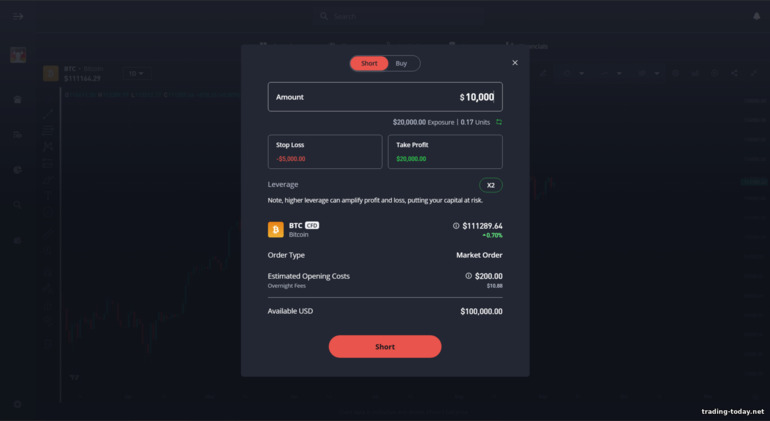
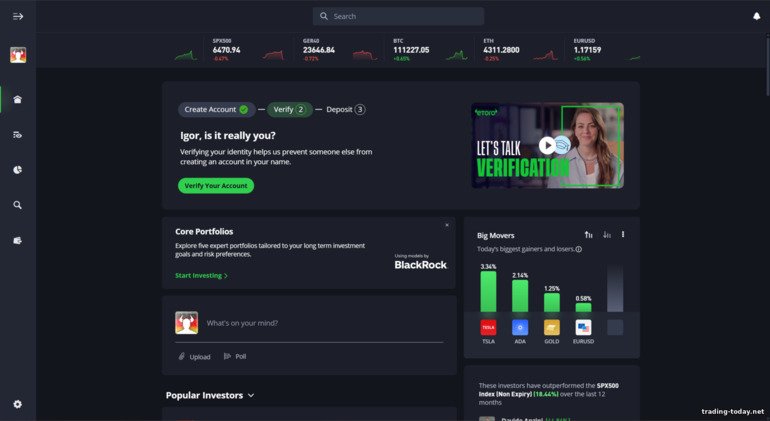
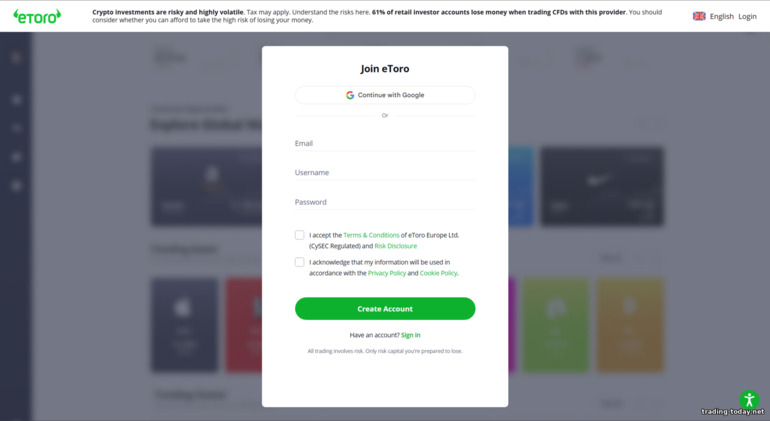
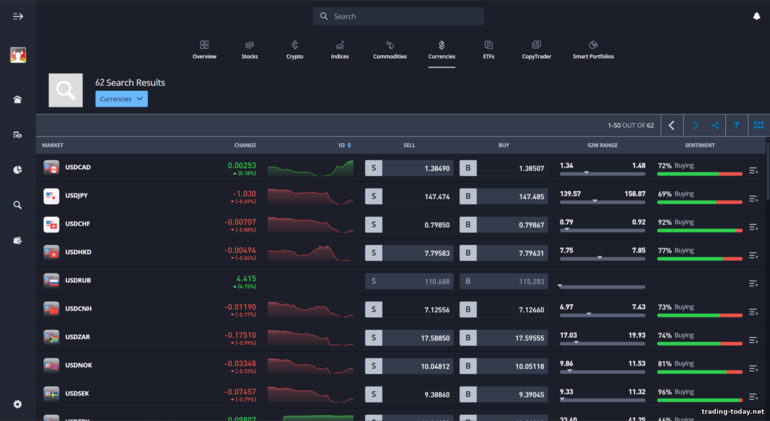



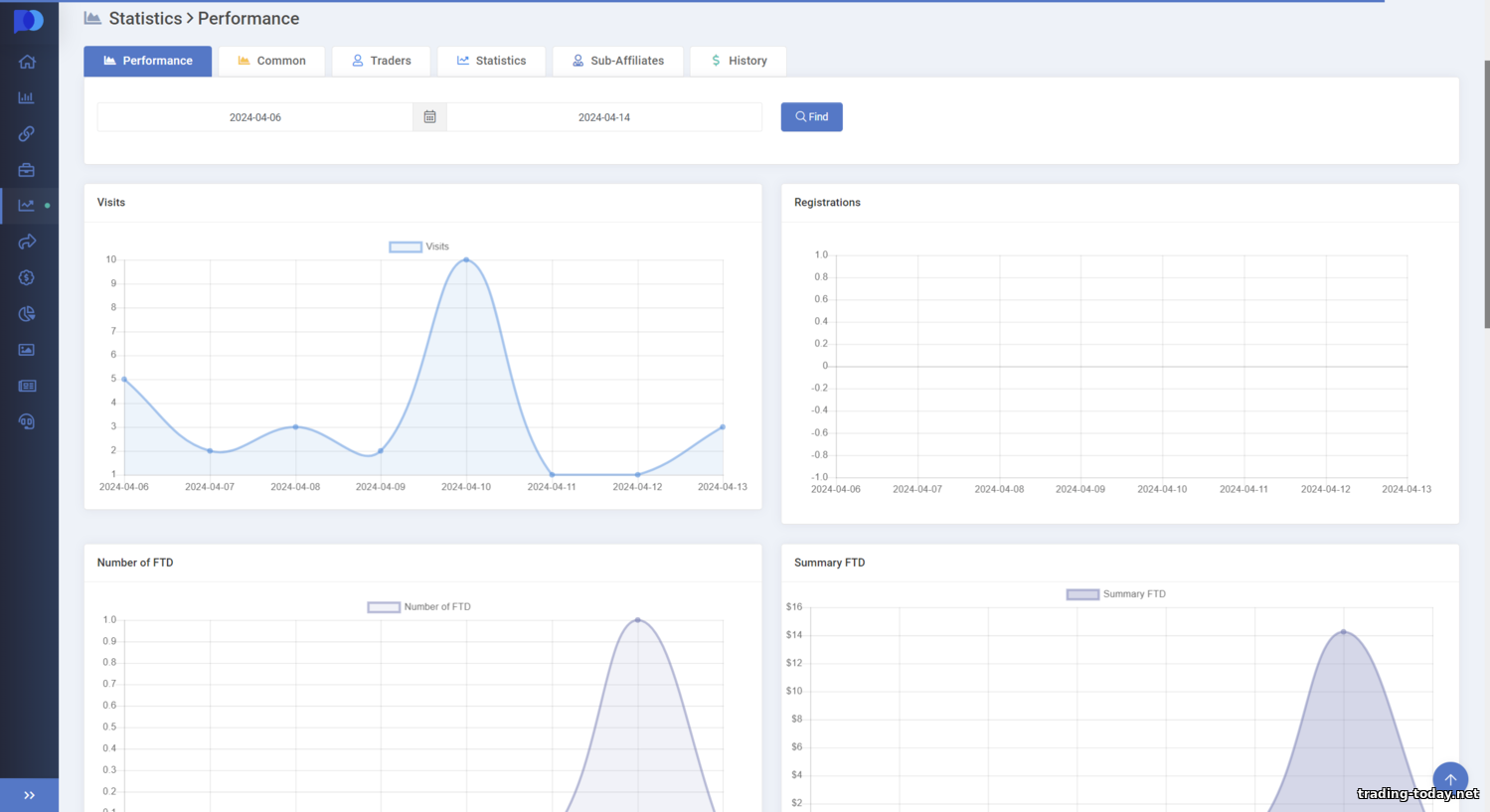
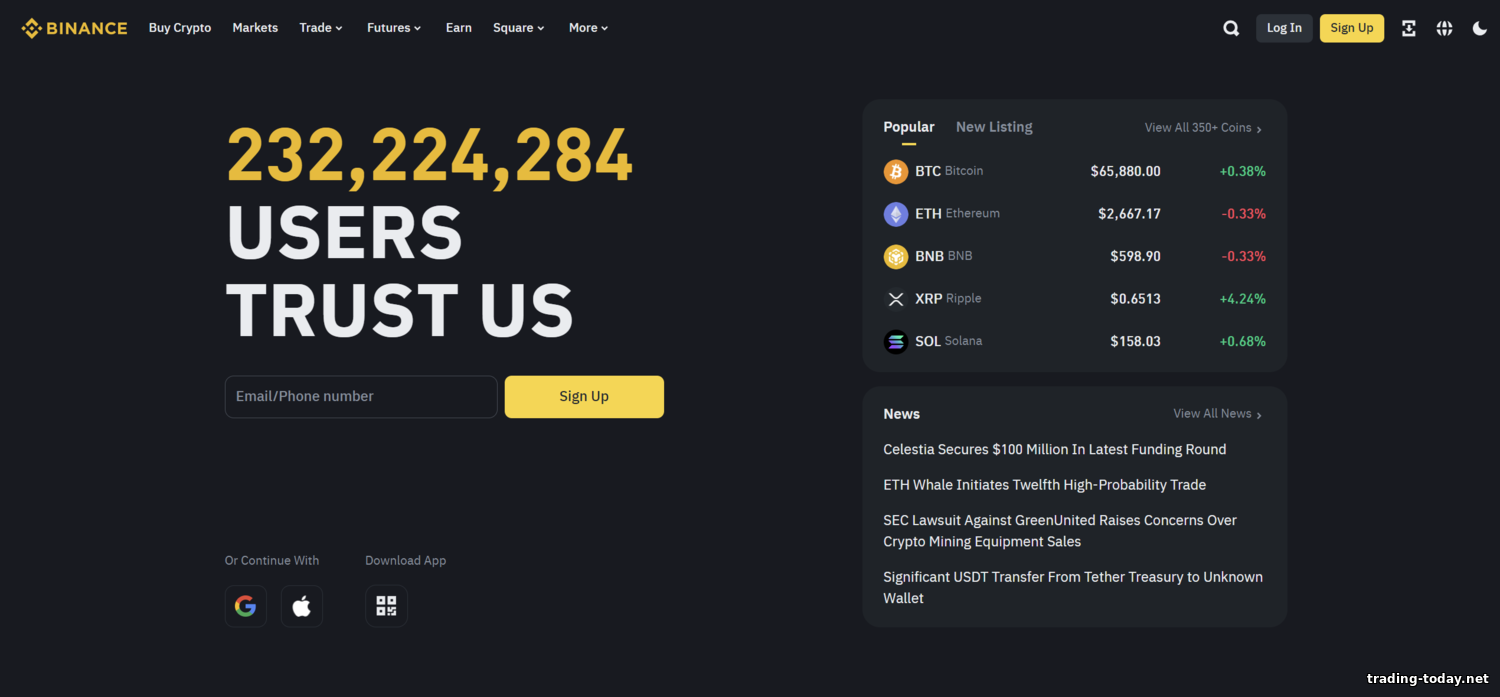

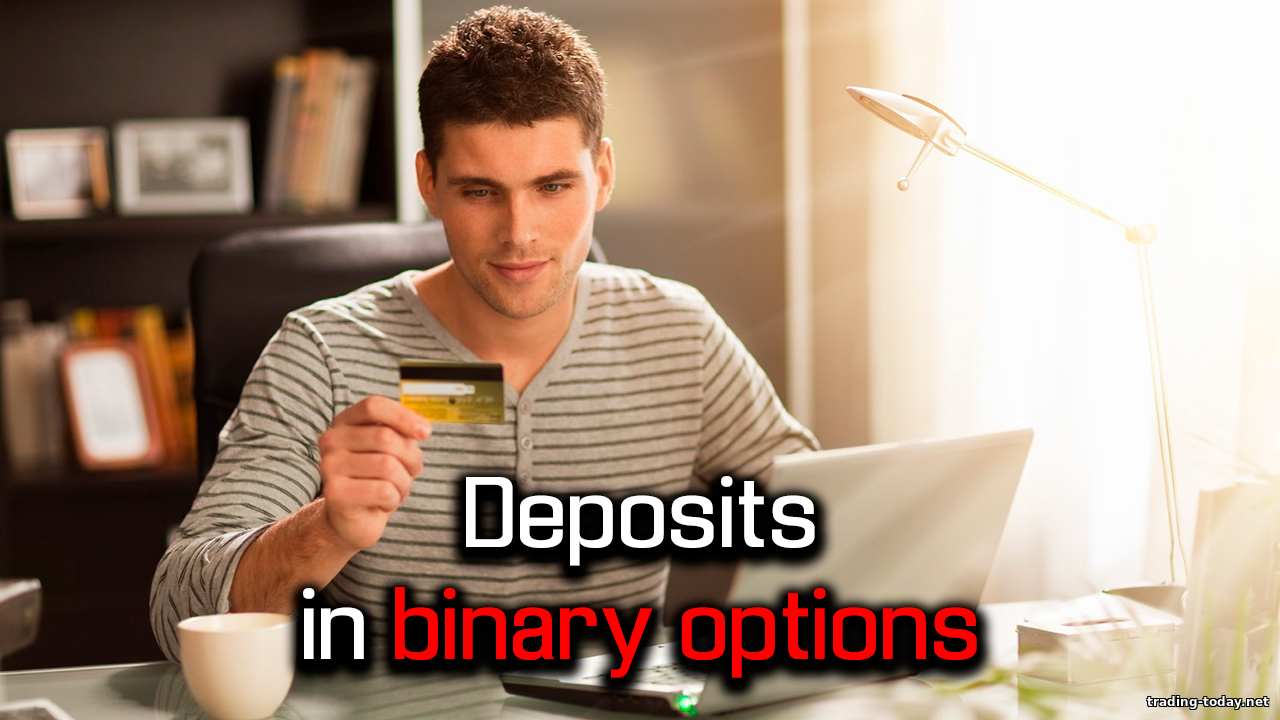
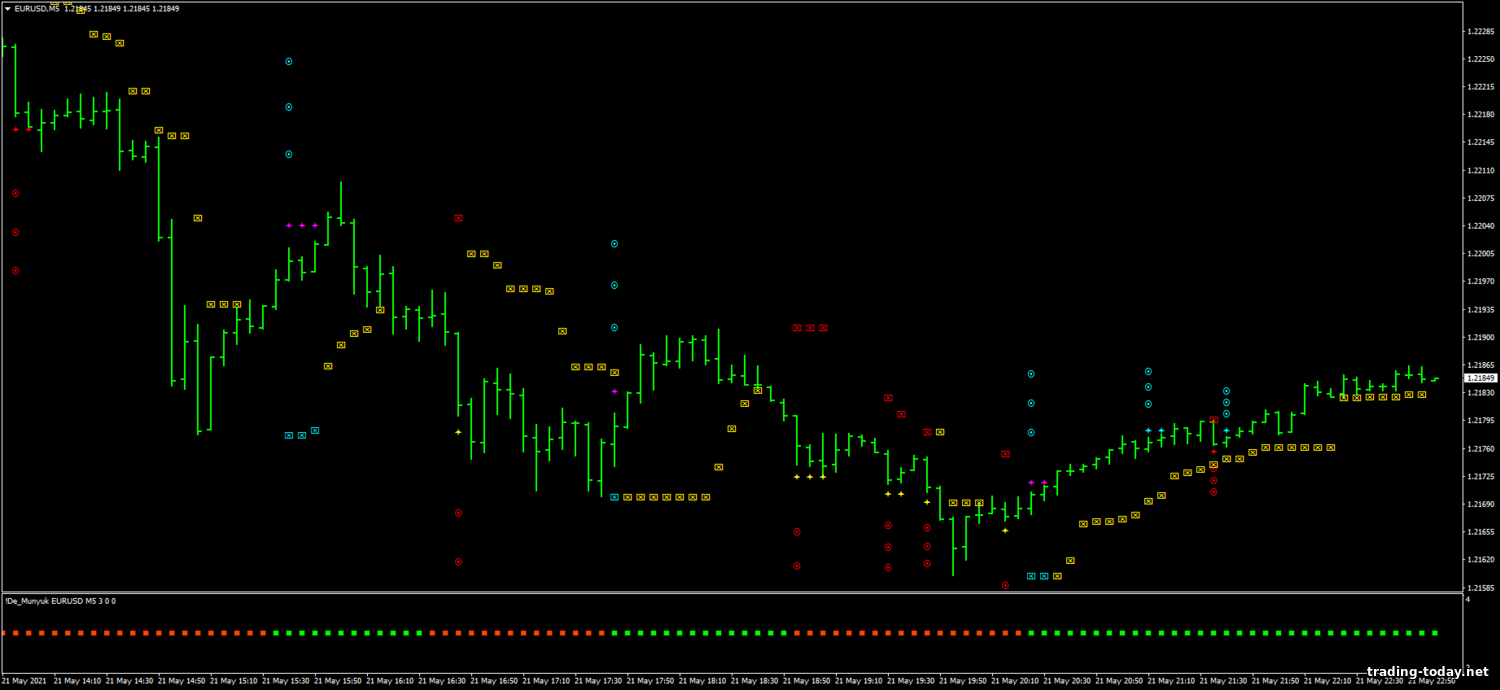
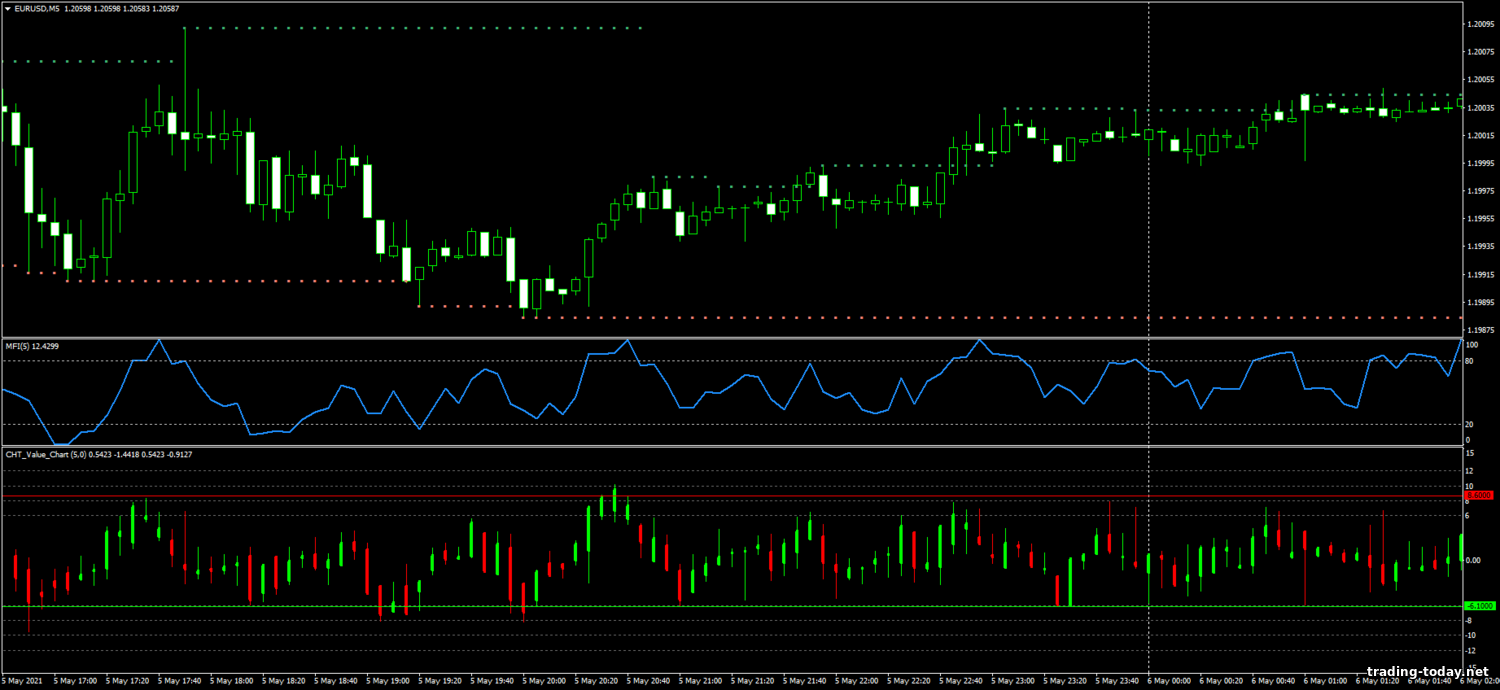
Reviews and comments